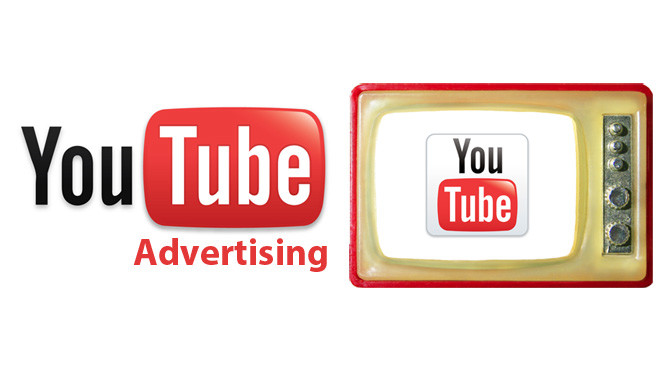How much does advertising on YouTube cost?
5 min read
The Real Cost Of Advertising On YouTube
advertising on YouTube: First of all, always be aware of when you have to pay for your YouTube ad. If a user views your ad without skipping or clicks on your call-to-action, YouTube will already charge you for that action. Whether you pay for views or clicks depends on the type of ad.
Now, there is no minimum amount you need to spend when you advertise on YouTube, which opens the following questions:
- How much should you spend on a YouTube ad?
- How much will it cost you to run an ad campaign on the platform?

Let’s answer the first question.
How much should you spend on a YouTube ad? It can cost you anywhere from $0.10 to $0.30 per click. It isn’t a standard cost every time, but YouTube charges businesses with the standard rate when they advertise on the platform. This cost will also vary depending on the following elements:
- The video quality.
- Your target audience.
- Your campaign goals.
Now, let’s answer the next question.
How much will it cost you to run an ad campaign on the platform? The amount you spend on a YouTube ad campaign depends on the daily budget that you set. Most brands spend a minimum of $10 daily, which increases as they learn more about their campaign’s performance.
You’re mostly going to pay on a cost per view basis. Every time a user watches your ad, you will pay for that action. It’s essential to set a ceiling or maximum budget on views to ensure that you don’t go beyond your YouTube ad budget.
Three Main Factors That Affect Your YouTube Ad Costs
Currently, three main factors determine how much YouTube ads cost, including:
- Your ad type or format
- Your bid and bidding selection
- Your targeting options
These factors will generally affect your YouTube ads rate in many different ways.
1. The Relationship Of Ad Formats And Ad Costs on YouTube
The video format will influence your YouTube ad costs. You’ll pay more for larger ad space and increased ad exposure.
Here are the six different types of YouTube ad formats you can choose from:
Display Ads
Display Ads appear to the feature video’s right and above the video suggestions list for mobile devices. For larger players like desktops, this ad may appear below the player.
Overlay Ads
Overlay Ads are semi-transparent Youtube ads that pop up on the lower 20% portion of a video.
Skippable Video Ads
Skippable Video Ads let viewers skip ads after 5 seconds if they prefer. These YouTube ads are inserted before, during, or after the main video.
Viewers may see a mix of skippable and bumper ads play back to back if you turn on this option.
Non-skippable Video Ads
Non-skippable Video Ads must be watched before a video can be viewed. These YouTube ads can also appear before, during, or after the main video.
Bumper Ads
Bumper Ads are non-skippable video ads of up to 6 seconds max that must be watched before a video can be viewed.
Viewers may see a combination of skippable and bumper ads play one after another if you turn on this option.
Sponsored Cards
Sponsored Cards show content relevant to a video, like products featured in the video.
Viewers will be shown a teaser for the card for a few seconds. In the top right corner of the video, viewers can also click the icon to browse the cards.
These different YouTube ad formats also influence your campaign’s cost because some of them have different payment options based on your audience’s actions. There are times when you need to pay for views, and other times you’ll need to pay after users watch 30 seconds of your ad.
2. Bid And Bidding Selection
The secret that many businesses do on YouTube is to bid on ad placement. However, keep in mind that Google doesn’t have any set price for advertising on YouTube.
Follow these steps to bid on a YouTube ad placement properly:
- Step 1: Set a daily budget for what you are willing to pay for your YouTube ads. Most businesses set a minimum of $10 per day for their YouTube ad campaigns.
- Step 2: Increase your daily budget once you have experimented with various options. Remember that you only need to pay when a user engages with your ad in some way. A user may watch your skippable ad for 30 seconds or click on a Call to Action on a display ad.
- Step 3: Do your targeting before you set your bidding options. YouTube bidding suggestions change as you modify your targeting.
In most cases, you bid by cost per view or CPV.
According to Google,
Cost-per-view (CPV) bidding is the default way to set the amount you’ll pay for TrueView video ads in Google Ads. With CPV bidding, you’ll pay for video views or interactions (such as clicks on call-to-action overlays, cards, and companion banners). A view is counted when someone watches 30 seconds of your video ad (or the duration if it’s shorter than 30 seconds) or interacts with the ad, whichever comes first.
This means that Google gives you the power to set the amount you are ready to spend up to your bid figure for each view. It also allows you to set a maximum figure you are willing to pay daily. Doing so ensures that you know how much you will pay when more users watch your ads than anticipated.
You can divide your bids separately for “In-Display” or “In-stream” if you click on “Customize Bids Per Format.” Bid more for “In-stream” statistics than you do for “In-Display” if you are more interested in “In-stream” advertising.
YouTube gives you a forecast of your views per day for in-search, in-display, and in-stream. If these numbers do not match your advertising goals, go back to your bids, and modify accordingly.
3. Targeting Options
The audience you target is another important factor that can significantly impact your YouTube ad cost.
If you’re targeting an audience that your competitors are already targeting, you might end up paying more and not get the best ROI because there is more competition for the ad spot. However, you will never pay over your maximum bid.
You may pay one cent more than your competitor depending upon who wins the best spot, but it will never go beyond your maximum bid.
For example, let’s say you have a maximum bid of $1, and your competitor bids $0.70 for each click. You can expect to pay no more than $0.71 per click, and it’s still within your $1 maximum bid.
This article, published on the Rialto Marketing blog is meant to help you get started with Youtube Advertising. I hope you found it helpful.
YouTube | Being the leading video media channel, it is a huge source to gain movable content/information (content in the visual). Be it from digital marketing content for products and services to television serials and episodes and also music. You just name it. And you can search all over here. According to stat shared by Statista (2019), YouTube has 2 billion users billion across the world. It is also stated that 79% of users have their own YouTube accounts which also come in 80 different languages that cover 95% of the internet population, now be a part of advertising on YouTube with MyHoardings.
[table “6” not found /]















